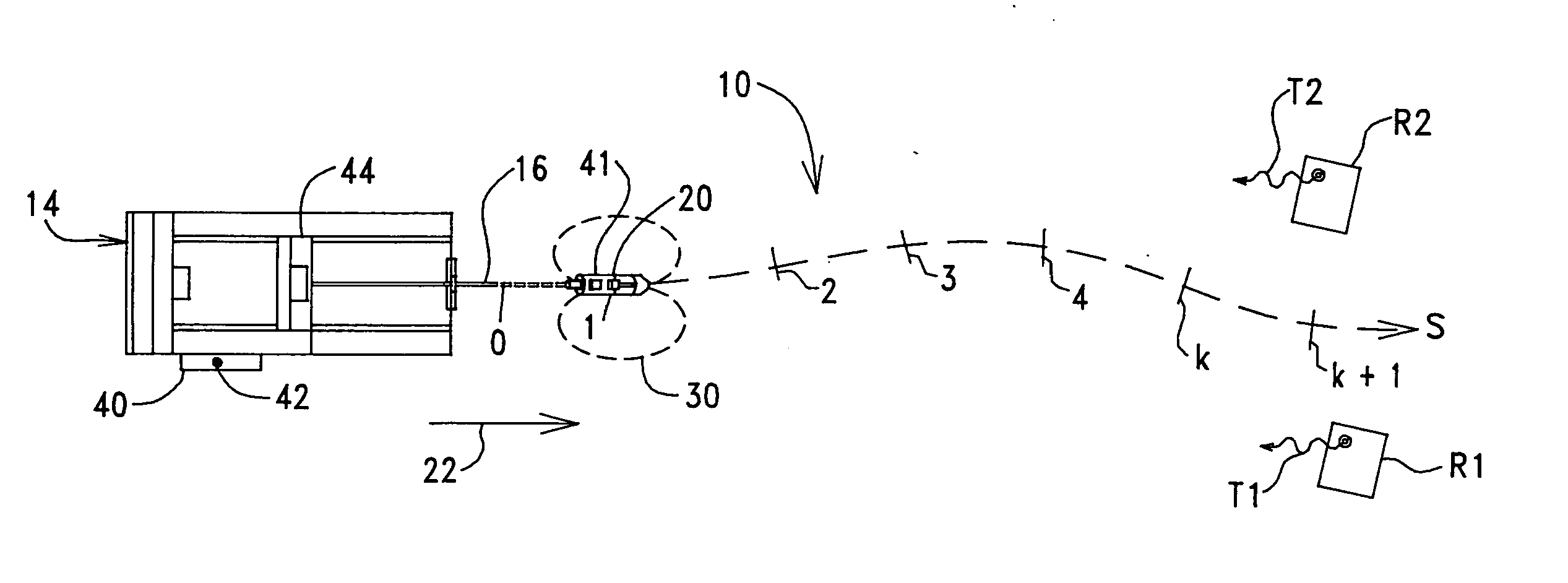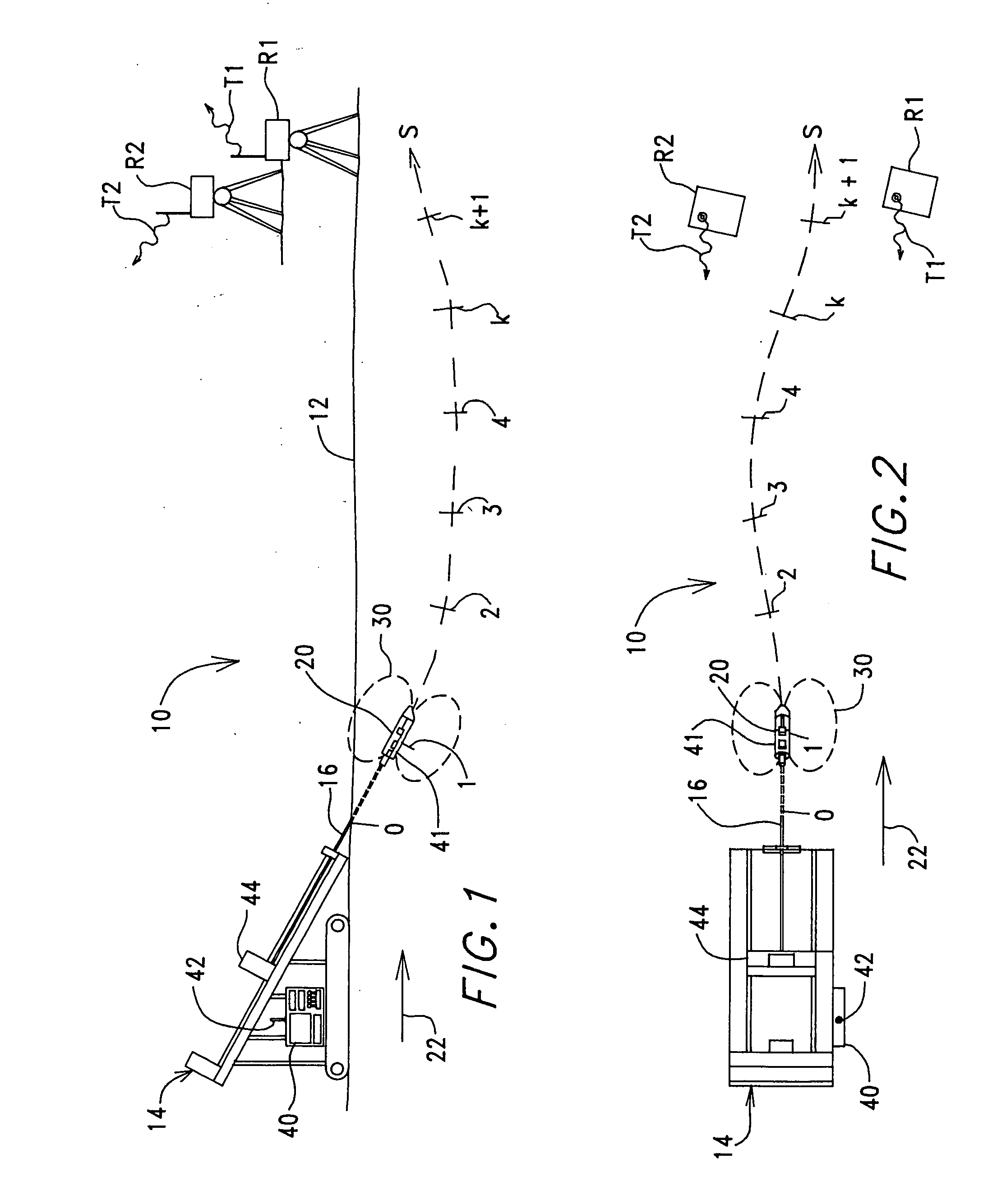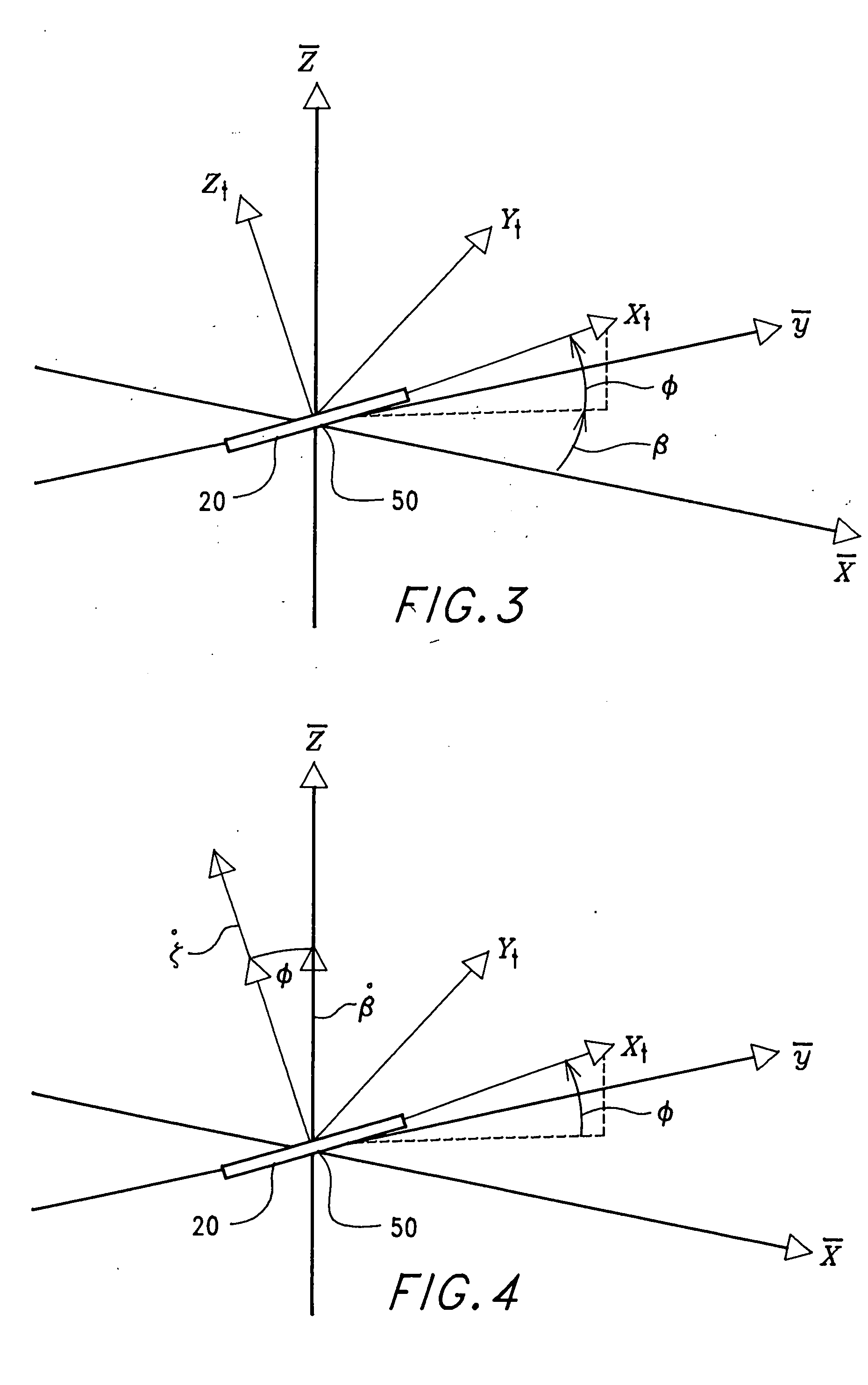Boring tool tracking fundamentally based on drill string length, pitch and roll
a drilling tool and drill string technology, applied in the direction of borehole/well accessories, directional drilling, survey, etc., can solve the problems of affecting the accuracy of the prediction position of the second position, the difficulty of determining the orientation parameter of the yaw in the context of prior art techniques, and the prone to significant measurement error of the direct measurement of the yaw using a magnetometer in the boring tool, etc., to achieve the prediction of the overall orientation and the predicted position accurately character
- Summary
- Abstract
- Description
- Claims
- Application Information
AI Technical Summary
Benefits of technology
Problems solved by technology
Method used
Image
Examples
Embodiment Construction
[0033] Turning now to the figures wherein like components are indicated by like reference numbers throughout the various figures, attention is immediately directed to FIG. 1 which diagrammatically illustrates a horizontal directional drilling system generally indicated by the reference number 10 and produced in accordance with the present invention. It is noted that the figures are not to scale for purposes of illustrative clarity and that like reference numbers refer to like components wherever possible throughout the various figures. FIG. 1 is an elevational view of system 10 operating in a region 12. System 10 includes a drill rig 14 having a drill string 16 extending therefrom to a boring tool 20. The drill string is pushed into the ground to move boring tool 20 at least generally in a forward direction 22 indicated by an arrow.
[0034] In the illustrated technique of system 10, a locating signal 30 is transmitted from the boring tool to receivers R1 and R2 positioned on the surf...
PUM
 Login to View More
Login to View More Abstract
Description
Claims
Application Information
 Login to View More
Login to View More - R&D
- Intellectual Property
- Life Sciences
- Materials
- Tech Scout
- Unparalleled Data Quality
- Higher Quality Content
- 60% Fewer Hallucinations
Browse by: Latest US Patents, China's latest patents, Technical Efficacy Thesaurus, Application Domain, Technology Topic, Popular Technical Reports.
© 2025 PatSnap. All rights reserved.Legal|Privacy policy|Modern Slavery Act Transparency Statement|Sitemap|About US| Contact US: help@patsnap.com



